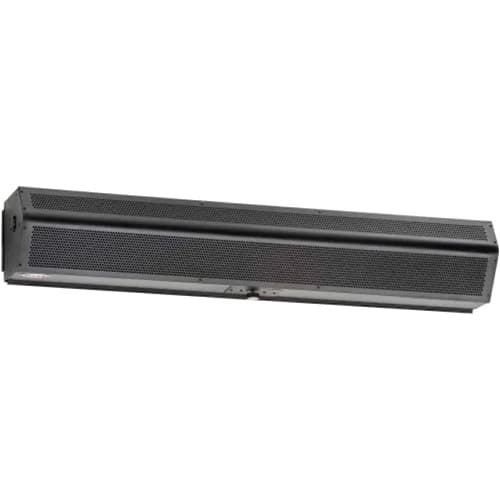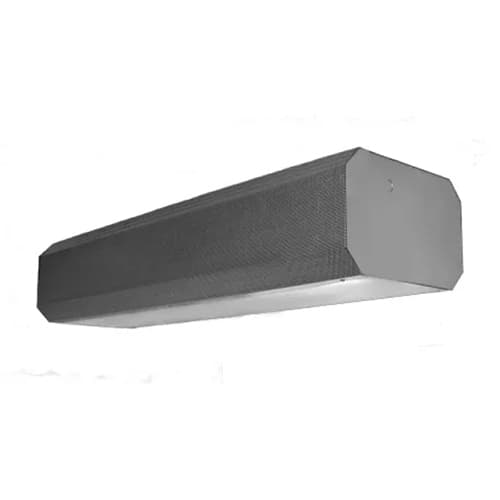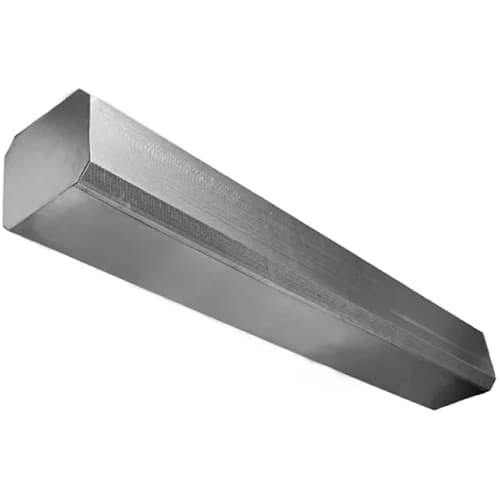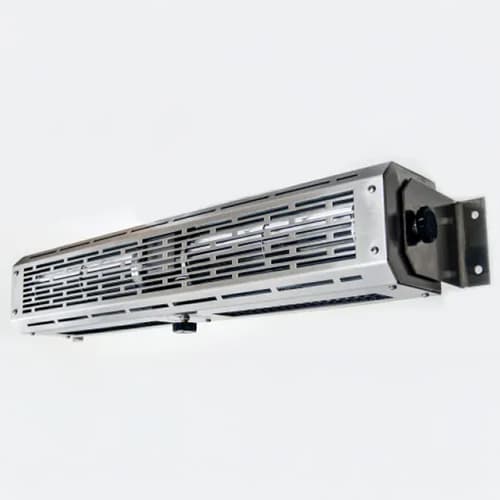Air curtains, known more commonly in the trade as air doors, are a smart and deceptively simple way to keep indoor space climates comfortable, especially in busy areas where doors are constantly opening and closing.
Whether you’re running a retail shop or managing a massive warehouse, air curtains help boost energy efficiency, improve comfort, and can even support a safer environment (more on that in a moment). But where do you start when looking for the right air curtains? Are some types better in some locations than others? Well, this handy air curtains buying guide will fill you in and get you to the right choice. Let’s dive in.
Air Curtains 101: How They Work and Why They’re Great.
OK, let’s quickly break this down so you know just what we refer to when we talk about air curtains, or air doors, and answer the big question… “how do air curtains work?”
An air curtain is a device that blows a steady stream of air across doorways, creating an invisible barrier that effectivity minimizes the exchange of air between the interior and exterior of a building. In fact, you’ve probably walked through one without even realizing it, like at the entrance of a grocery store or home improvement warehouse.
The main function of an air curtain is to keep the indoor air (whether heated or cooled) inside, and the outdoor air, along with dust, bugs, and fumes, outside. It works by creating a high-speed sheet of air that covers the doorway without physically blocking it. This enables employees, customers, forklifts, and shopping carts to pass through easily, but the air always stays where it’s supposed to. It’s a very smart and efficient way to not only save energy, but keep indoor spaces way more comfortable, and reduce unwanted stuff from sneaking in when doors are constantly opening and closing.
Typically, they are mounted above or beside doorways and can be installed in both exterior and interior settings, making them versatile for a variety of uses. But when it comes to the effectiveness of the curtain, that all depends on its size, design, and the specific conditions of the floor space.
The Myriad Benefits of Air Curtains
Where to start? There are so many reasons to install them, with quality air curtains providing a wide array of benefits. These include significant energy savings, improved indoor air quality, more comfort for staff and guests, and of course greater safety in both industrial and commercial environments. Let’s take a deeper dive:
1. Energy Efficiency & Cost Savings
- Reduced Heating and Cooling Costs: What we’re talking about here is a reduction in the amount of either heated of cooled air that is allowed to escape from the building. The air curtain is a barrier to stop that air, which is expensive to heat or cool, from getting out. This results in lower heating costs in winter, and much lower cooling costs in summer, contributing to substantial energy savings. And that’s more money in your pocket. This is by far one of the best industrial air curtain applications.
- Less Strain on Your HVAC System: By stabilizing the temperature around doorways, air curtains alleviate the strain on your heating, ventilation, and air conditioning (HVAC) systems. Basically, the HVAC doesn’t have to work as hard to maintain temperatures, and this results in energy savings and a prolonged lifespan for your HVAC equipment.
- Energy Savings: According to studies, air curtains can save up to 80% of the energy typically lost through open doorways compared to comparative spaces without an air curtain. What’s more, similar studies found that high-efficiency air curtains in commercial facilities provided energy savings of more than 30%! This makes them an excellent investment for high-traffic entryways in a wide variety of facilities where temperature control (and cost savings) is essential.
2. Comfort & Indoor Air Quality
- Temperature Stability: By maintaining consistent indoor temperatures, air curtains are fantastic at preventing drafts, irritating cold spots, and sudden temperature fluctuations. With no more of those uncomfortable, and unpredictable, temperature variations, you’ll provide an enhanced environment for employees, customers, and visitors. And yourself.
- Much Better Air Quality: Air curtains are superb art preventing the entry of dust, pollen, pollutants, and other contaminants into indoor environments, regardless of the weather outside. This contributes to a cleaner, and more importantly healthier, indoor space for everyone. While great for comfort in general, it’s especially important in places where air quality is crucial, such as healthcare facilities and sterile manufacturing areas.
- Humidity Control: Air curtains help control the humidity levels within a building by preventing the entry of humid air from outside. This is crucial for areas where high humidity could cause discomfort, mold growth, or damage to sensitive materials.
- Insect Control: No more bug zappers (or at least, they won’t be working as hard). See, one of the key benefits of an industrial air curtain is its ability to block flying insects from coming in through open doorways. If you’re in either food service or healthcare environments, where contamination must be minimized, this is a no-brainer.
- Draft Reduction: Air curtains reduce the impact of drafts, ensuring that indoor spaces remain comfortable year-round, regardless of outdoor weather conditions. In short, drafts are cut to a minimum just by the installation of an air curtain.
3. Safety and Operational Benefits
- Increased Safety: The presence of harmful contaminants in your facility, including flying insects, pests, and bacteria, can pose a real threat to working conditions. This is especially important in the food service and healthcare sectors, where hygiene and safety are paramount. The invisible barrier created by an air conditioner curtain can help create a much safer workplace.
- Improved Visibility: Traditional doors obstruct views, and this can lead to a whole range of health and safety issues. However, air curtains are invisible and do not obstruct the view of the surrounding environment, making it easier for supervisors and workers to monitor operations and keep the workplace safe.
- Easy Access: The seamless flow of people and goods in and out of a building, without the need to open or close physical doors, is a boon to certain industries. And air curtains allow that to happen. This is beneficial in high-traffic areas like loading docks or retail entrances.
- Fire Safety: In some (but not all) environments, air curtains can act as barriers to smoke in case of fire, providing an additional layer of safety during emergencies. By creating an invisible barrier of high-velocity air across openings, they effectively limit the spread of smoke and flames during fire incidents.
Air curtains influence fire behavior in two critical ways:
- By creating a high-velocity barrier that prevents the emission of hot, toxic gases from the fire zone, and second, by containing combustion gases within the affected room while simultaneously restricting the inflow of oxygen, which is an essential element for sustaining flames. This dual-action containment not only slows the fire’s progression but can also contribute to its gradual extinguishment. By effectively separating adjacent areas, air curtains control the transfer of heat, harmful gases, and particulate pollutants, thereby minimizing cross-contamination and helping to maintain safer, breathable air in evacuation routes or protected zones.
- What’s more, a recent study published in Applied Sciences examined the effectiveness of air curtains in emergency stairwells of multi-unit residential buildings. The findings revealed that vertical air curtains, operating at a wind speed of 35 m/s, reduced soot concentration by 80–99% compared to scenarios without air curtains. Horizontal air curtains also demonstrated efficacy, achieving reduction rates of 65–99% in various scenarios. These results underscore the potential of air curtains to significantly enhance smoke control measures in building safety systems.
So Where Are Air Curtains Most Effective?
Now that you know just how beneficial energy efficient air curtains can be, it’s time to look at the places where those benefits will be most impactful and the best air curtains for commercial use. As you have no doubt considered, air curtains are particularly effective in high-traffic environments where doors are frequently opened and closed. They’re also primed for places that need good visibility, and where contaminant control needs to be coupled with ease of access. Let’s see some of the most common uses:
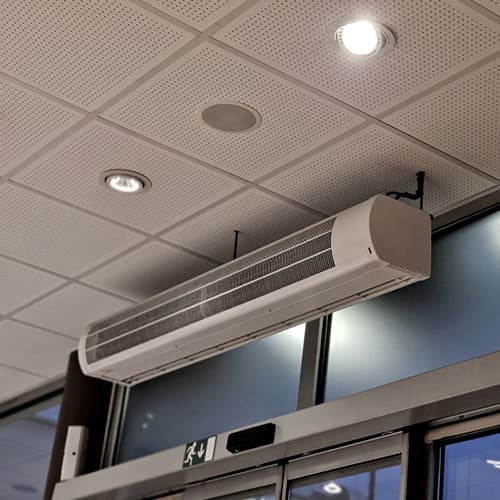
Storefronts
As you know yourself as a customer (especially during busy holiday seasons) retail entrances see a nonstop flow of customers coming and going. This really plays with the indoor temperatures, and in turn, the comfort of guests and the strain on the AC system. Air curtains act like an invisible shield, keeping warm or cool air inside while still letting people walk through freely. That means a more comfortable shopping experience and lower energy bills, all without blocking the door.
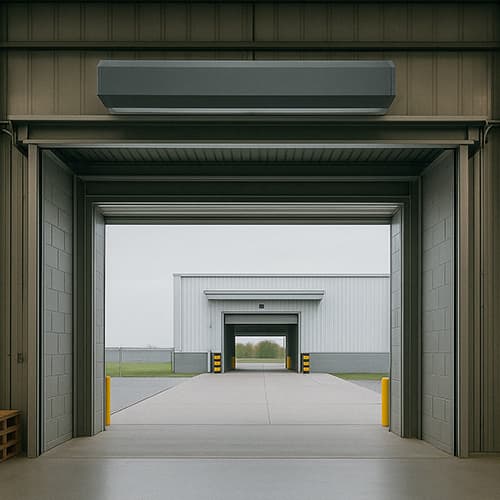
Loading Docks
This is where the action happens, with loading docks being some of the busiest parts of the building or facility. Big doors are constantly opening and closing, and that can be a field day for dust, dirt, bugs, pollen, and other irritants. A loading dock air curtain is great at preventing all of those from sneaking in, which is again a real plus during the hottest summer months.
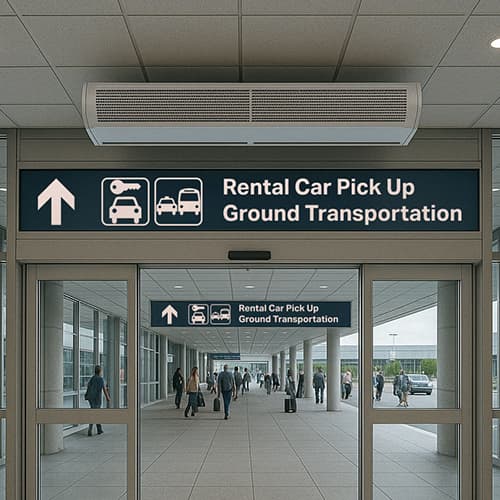
Airports
Is there ever a time when airports aren’t busy? With crowds of travelers and doors constantly opening to the outdoors, airports are clearly a perfect fit for air curtains. These essential systems help maintain indoor comfort by keeping out hot, cold, or humid air, even when traffic is heavy. They also help manage indoor air quality, which is a big win for both travelers and staff.
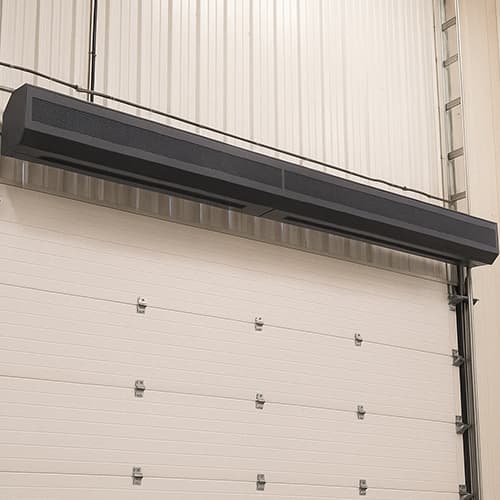
Warehouses
These engines of big business need consistent conditions to protect products and keep operations running smoothly. Air curtains control the indoor climate by reducing the amount of outside air that gets in. Whether it's hot or cold outside, air curtains for warehouses maintain a comfortable workspace and aggressively cut down on heating and cooling costs.
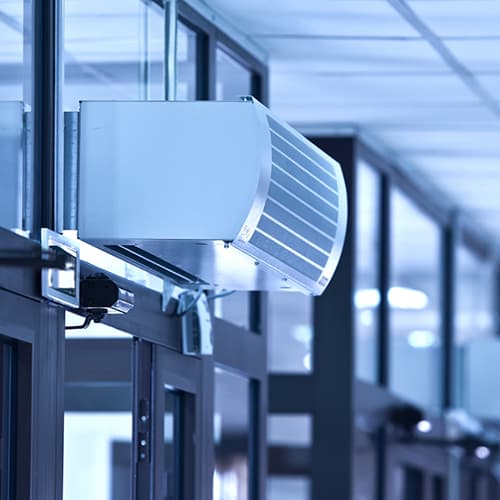
Healthcare Facilities
With their ability to keep contaminants at bay, air curtains are indispensable in healthcare settings such as hospitals, clinics, and laboratories. They create a barrier to dust, bacteria, and other airborne particles and hazards, ensuring the indoor environment remains sterile and free from pollutants that could potentially jeopardize the health of patients.
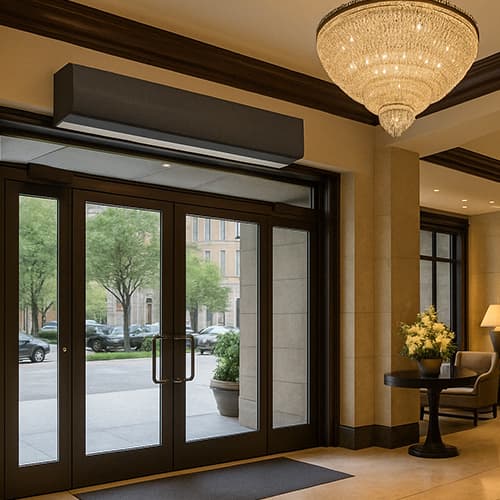
Hospitality
Hotels and restaurants use air curtains to keep their guests comfortable. By maintaining consistent indoor temperatures and reducing drafts, plus creating an invisible barrier to outdoor elements such as rain, humidity, and insects, they ensure a pleasant and consistent environment for guests.
Considerations For Selecting an Air Curtain
So, now it’s time. You know the benefits, you know just where you’ll use them. But you still have to keep a few things in mind before hitting the buy button. Here are several important factors to consider:
- Location: Air curtains installed in exterior doorways typically require more power than those placed in interior doors due to the greater temperature difference between the inside and outside air.
- Ambient Temperature: Energy efficient air curtains are available in models designed for various ambient conditions. If you're operating in a location with extreme temperatures, such as a cold storage warehouse, you may need a unit capable of withstanding and managing those conditions.
- Door Traffic: If the door remains open frequently, consider an air curtain that activates automatically when the door opens. This ensures that the air barrier is in place at all times.
- Air Curtain Size: It's crucial to choose the right size air curtain for your doorway. Ensure that the unit's width and airflow capacity are sufficient for the door’s size to provide optimal performance. Without the correct air curtain dimensions, you won’t get an efficient barrier.
- Power Availability: Air curtains typically require a hardwired power connection. Be sure to check that electrical outlets are available near the door for proper installation.
- Noise Levels: Depending on your facility, noise levels may be a concern. Industrial settings such as warehouses may not be as sensitive to noise, but in commercial settings like retail or hospitality, quieter models may be preferred to maintain a pleasant atmosphere.
Major Types of Air Curtains
When it comes to choosing an air curtain, there are various designs to suit different environments. Here are some of the most common types:
Standard Air Curtains
These versatile air curtains are suitable for a broad range of settings, from retail entrances to warehouse doors. They effectively create an invisible barrier that helps maintain indoor temperatures and reduce energy costs. For instance, the Mars® Standard 2 Series Air Curtain is a great air curtain for warehouse doors and offers reliable performance with options for unheated or electrically heated models to suit different climate needs.
Recessed Air Curtains
Designed for a sleek and unobtrusive appearance, recessed air curtains are installed above doorways and integrated into the building's structure. This design maintains the aesthetic integrity of the space while providing the functional benefits of air separation. Global Industrial offers models like the Low-Profile Air Curtain series, which can be recessed into ceilings or door frames for a clean look.
Sanitation Certified Air Curtains
In environments where hygiene is critical (food processing facilities or hospitals for example), sanitation-certified air curtains are essential. These units meet stringent health and safety standards to prevent contaminants from entering clean areas. Global Industrial provides NSF-37 Certified Air Curtains, like the 84-inch model, which are specifically designed to meet these rigorous requirements.
Drive-Thru Air Curtains
Tailored for fast-food restaurants and similar establishments, drive-thru air curtains are engineered to provide a robust air barrier for service windows. They help maintain indoor comfort by minimizing the infiltration of outdoor air, fumes, and insects, all while allowing easy access for transactions. The PTW Series Drive-Thru Electric Heated Air Curtain exemplifies this application, offering efficient performance in a compact design.
Modular Air Curtains
For doorways and openings with non-standard dimensions, or unique shapes, modular air curtains offer a flexible solution. These systems can be customized/configured to fit specific architectural requirements, ensuring effective air separation regardless of the opening's design.
To sum up, air curtains are an excellent, and budget-friendly, solution for improving energy efficiency, enhancing comfort, and increasing safety in industrial AND commercial facilities. By understanding the benefits and selecting the right type of energy efficient air curtains for your specific needs, you can ensure that your building remains efficient, comfortable, and safe year-round. And as always, the experts here at Global Industrial know all about air curtains, and will be happy to steer you to the best choice for your facility or floor space. Let’s get that invisible barrier working for you, and your bottom line.
The information contained in this article is for informational, educational, and promotional purposes only and is based on information available as of the initial date of publication. It is the reader’s responsibility to ensure compliance with all applicable laws, rules, codes and regulations. If there is any question or doubt in regard to any element contained in this article, please consult a licensed professional. Under no circumstances will Global Industrial® be liable for any loss or damage caused by your reliance on this article.
